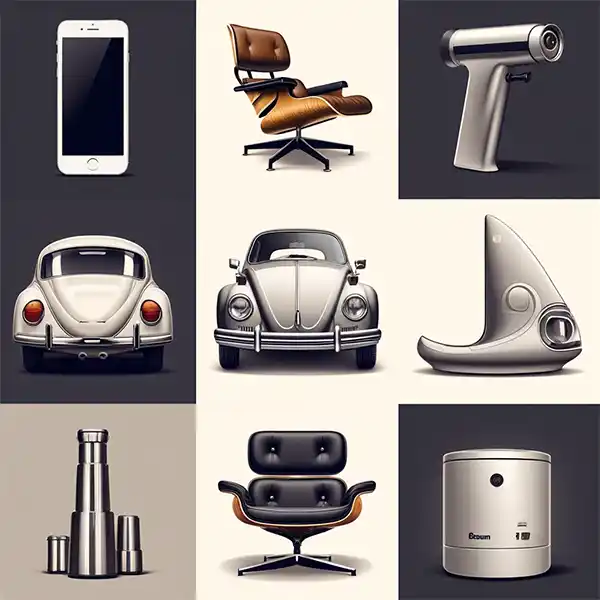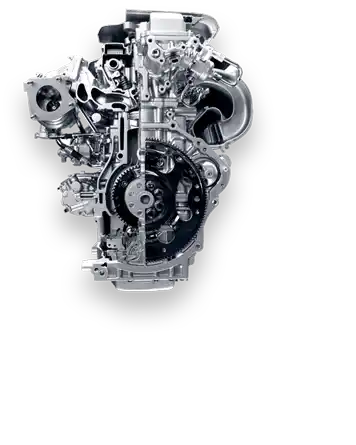The Art and Science of Creating Everyday Wonders
Every year on June 29th, we celebrate World Industrial Design Day, a day dedicated to recognizing and appreciating the significant impact of industrial design on our daily lives. From the sleek smartphone in your pocket to the ergonomically designed office chair you're sitting on, industrial design is all around us, shaping the way we interact with the world. Let’s dive into the fascinating world of industrial design and explore its importance, evolution, and some remarkable examples that have changed the way we live.
Industrial design is the professional practice of designing products used by millions of people around the world every day. It focuses on the aesthetics, functionality, and usability of products, aiming to create items that are not only visually appealing but also practical and user-friendly. Industrial designers blend art, business, and engineering to make products that meet the needs of consumers while being manufacturable and marketable.
A Brief History of Industrial Design
The roots of industrial design can be traced back to the Industrial Revolution in the late 18th and early 19th centuries, a period that saw the transition from hand production methods to machines and factory systems. With mass production came the need for products that were not only functional but also appealing to consumers.
One of the early figures in industrial design was Michael Thonet, who revolutionized furniture design with his bentwood chairs in the mid-19th century. His innovative use of steam-bent wood allowed for the mass production of lightweight, durable, and affordable furniture, which became immensely popular worldwide.
In the early 20th century, the Bauhaus movement, led by Walter Gropius, emphasized the unity of art, craft, and technology, influencing the approach to industrial design. The Bauhaus school produced iconic designs that were functional, simplistic, and aesthetically pleasing, setting the foundation for modern design principles.
Henry Dreyfuss, an American industrial designer, further shaped the field with his user-centric approach. His designs for Bell telephones, Hoover vacuum cleaners, and the Honeywell round thermostat were not only innovative but also highly practical, demonstrating how thoughtful design could enhance the user experience.
 Raymond Loewy, often referred to as the father of industrial design, introduced the concept of "streamlining" in the 1930s and 1940s. His designs, such as the iconic Coca-Cola bottle and the Greyhound bus, showcased sleek, aerodynamic shapes that were both functional and visually appealing, capturing the spirit of modernity and progress.
Raymond Loewy, often referred to as the father of industrial design, introduced the concept of "streamlining" in the 1930s and 1940s. His designs, such as the iconic Coca-Cola bottle and the Greyhound bus, showcased sleek, aerodynamic shapes that were both functional and visually appealing, capturing the spirit of modernity and progress.
The Impact of Industrial Design
Industrial design isn’t just about making things look good—it’s a transformative force that influences how we live, work, and interact with the world. Beyond aesthetics, it’s a discipline that combines creativity with practicality to solve problems, improve lives, and shape culture. Its impact is visible in virtually every object we use daily, from the intuitive ergonomics of a toothbrush to the aerodynamic elegance of a high-speed train.
One of the most profound effects of industrial design is how it democratizes innovation. By making cutting-edge technology accessible and user-friendly, industrial design ensures that advancements in science and engineering don’t remain confined to labs or luxury markets. Think of how compact and affordable kitchen appliances brought culinary conveniences once reserved for professionals into millions of homes or how thoughtfully designed prosthetics have enhanced mobility for people around the world.
Industrial design also plays a pivotal role in sustainability, addressing some of the most pressing challenges of our time. Products with modular designs, for instance, extend lifespans by enabling easy repairs and upgrades. Packaging innovations reduce waste while maintaining functionality and visual appeal. Solar-powered devices and energy-efficient systems are designed to seamlessly integrate into everyday life, encouraging widespread adoption of eco-friendly practices.
On a cultural level, industrial design reflects and influences societal values. The shift from bulky, utilitarian devices to sleek, minimalist designs mirrors our collective preference for simplicity and elegance. At the same time, retro-inspired designs evoke nostalgia, bridging generations and grounding cutting-edge technology in familiarity.
Lastly, industrial design humanizes technology. It transforms cold, mechanical innovations into objects of comfort and utility that fit naturally into our routines. Consider the evolution of wearable devices: early models were clunky and niche, while today’s smartwatches blend seamlessly into both fashion and function. This ability to make technology approachable and desirable ensures its adoption and integration into daily life, driving progress at an unprecedented pace.
In short, industrial design isn’t merely a field—it’s a bridge between possibility and reality, turning ideas into tangible, impactful products that enhance the human experience.
Iconic Industrial Designs
-
The iPhone: Perhaps one of the most influential industrial designs of the 21st century, the iPhone redefined the smartphone market with its sleek design, intuitive interface, and innovative features. It set a new standard for mobile devices and continues to influence design trends today.
-
The Eames Lounge Chair: Designed by Charles and Ray Eames, this chair is a timeless piece of furniture that combines comfort with elegance. Its design has been celebrated for its perfect balance of style and function, making it a staple in modern homes and offices.
-
The Volkswagen Beetle: With its distinctive shape and affordability, the Beetle became one of the best-selling cars of all time. Its design focused on simplicity, durability, and economy, making it a beloved vehicle across generations.
-
Braun Products by Dieter Rams: Dieter Rams, a legendary figure in industrial design, created numerous products for Braun that exemplified his philosophy of “less but better.” His work has inspired countless designers and continues to be a benchmark for minimalist design.
The Future of Industrial Design
As we look to the future, industrial design will continue to evolve, driven by technological advancements and changing consumer needs. Sustainability is becoming increasingly important, with designers focusing on creating products that minimize environmental impact. Innovations in materials, such as biodegradable plastics and recycled components, are opening new possibilities for eco-friendly designs.
Moreover, the rise of smart technology and the Internet of Things (IoT) is leading to more interconnected and intelligent products. Industrial designers are now tasked with creating seamless and intuitive user experiences for these advanced technologies, ensuring they are accessible and beneficial to users.
World Industrial Design Day is a perfect occasion to celebrate the creativity, ingenuity, and hard work of industrial designers who make our lives easier, more efficient, and more enjoyable. So, the next time you marvel at the elegance of your smartphone or appreciate the comfort of your office chair, remember the industrial designers who brought these innovations to life. Their work not only shapes our present but also paves the way for a better, more beautifully designed future.
Please Share our Content






 Raymond Loewy, often referred to as the father of industrial design, introduced the concept of "streamlining" in the 1930s and 1940s. His designs, such as the iconic Coca-Cola bottle and the Greyhound bus, showcased sleek, aerodynamic shapes that were both functional and visually appealing, capturing the spirit of modernity and progress.
Raymond Loewy, often referred to as the father of industrial design, introduced the concept of "streamlining" in the 1930s and 1940s. His designs, such as the iconic Coca-Cola bottle and the Greyhound bus, showcased sleek, aerodynamic shapes that were both functional and visually appealing, capturing the spirit of modernity and progress.








 "Sláinte!" is a traditional Irish expression used as a toast, equivalent to "Cheers!" in English.
"Sláinte!" is a traditional Irish expression used as a toast, equivalent to "Cheers!" in English.